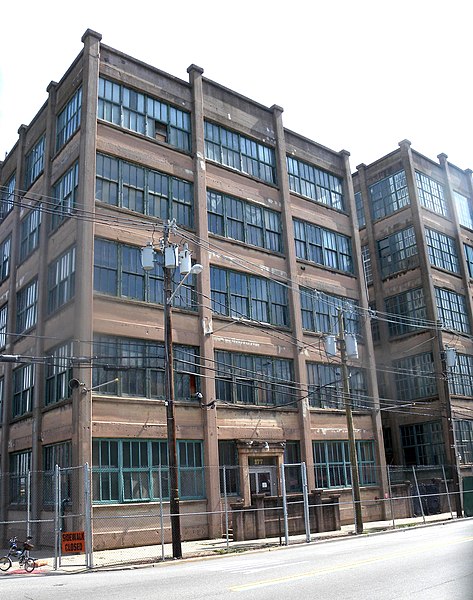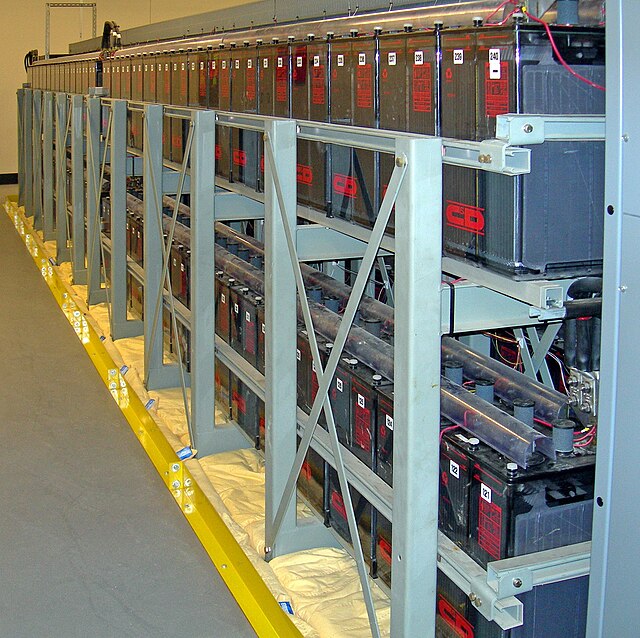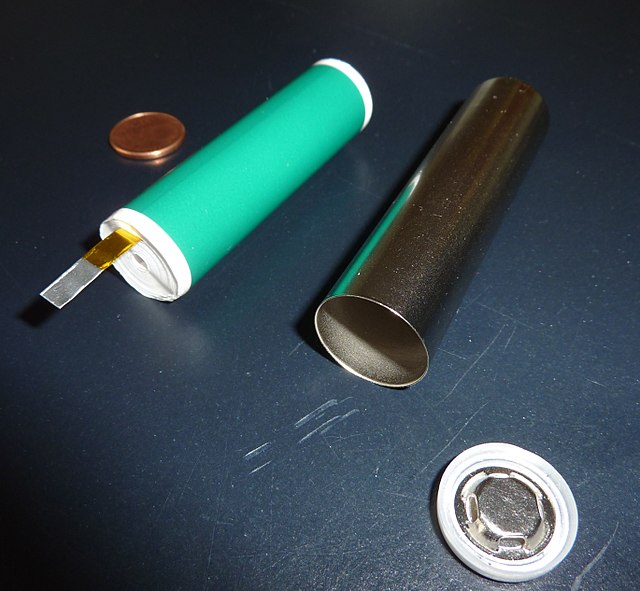The nickel–iron battery is a rechargeable battery having nickel(III) oxide-hydroxide positive plates and iron negative plates, with an electrolyte of potassium hydroxide. The active materials are held in nickel-plated steel tubes or perforated pockets. It is a very robust battery which is tolerant of abuse, and can have very long life even if so treated.
It is often used in backup situations where it can be continuously charged and can last for more than 20 years. Due to its low specific energy, poor charge retention, and high cost of manufacture, other types of rechargeable batteries have displaced the nickel–iron battery in most applications.
Nickel–iron batteries manufactured between 1972 and 1975 under the "Exide" brand originally developed in 1901 by Thomas Edison.
Thomas Edison in 1910 with his nickel-iron cell from his own production line
Edison Storage Battery Company
Three banks of plates inside a modern nickel iron battery
A rechargeable battery, storage battery, or secondary cell, is a type of electrical battery which can be charged, discharged into a load, and recharged many times, as opposed to a disposable or primary battery, which is supplied fully charged and discarded after use. It is composed of one or more electrochemical cells. The term "accumulator" is used as it accumulates and stores energy through a reversible electrochemical reaction. Rechargeable batteries are produced in many different shapes and sizes, ranging from button cells to megawatt systems connected to stabilize an electrical distribution network. Several different combinations of electrode materials and electrolytes are used, including lead–acid, zinc–air, nickel–cadmium (NiCd), nickel–metal hydride (NiMH), lithium-ion (Li-ion), lithium iron phosphate (LiFePO4), and lithium-ion polymer.
A battery bank used for an uninterruptible power supply in a data center
A rechargeable lithium polymer mobile phone battery
A common consumer battery charger for rechargeable AA and AAA batteries
Cylindrical cell (18650) prior to assembly. Several thousand of them (lithium ion) form the Tesla Model S battery (see Gigafactory).








